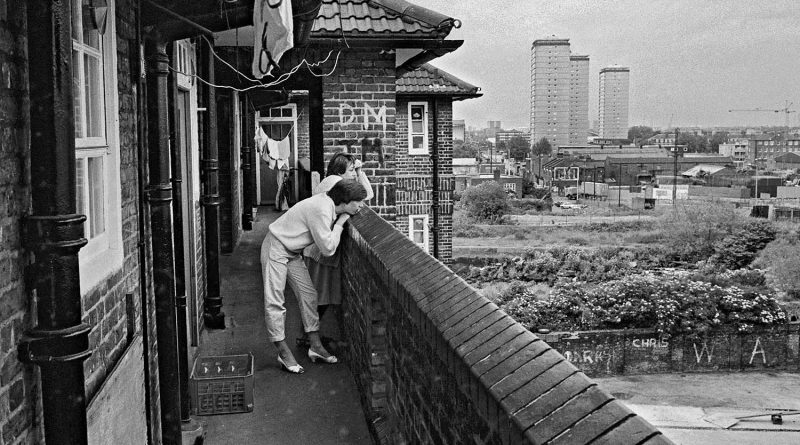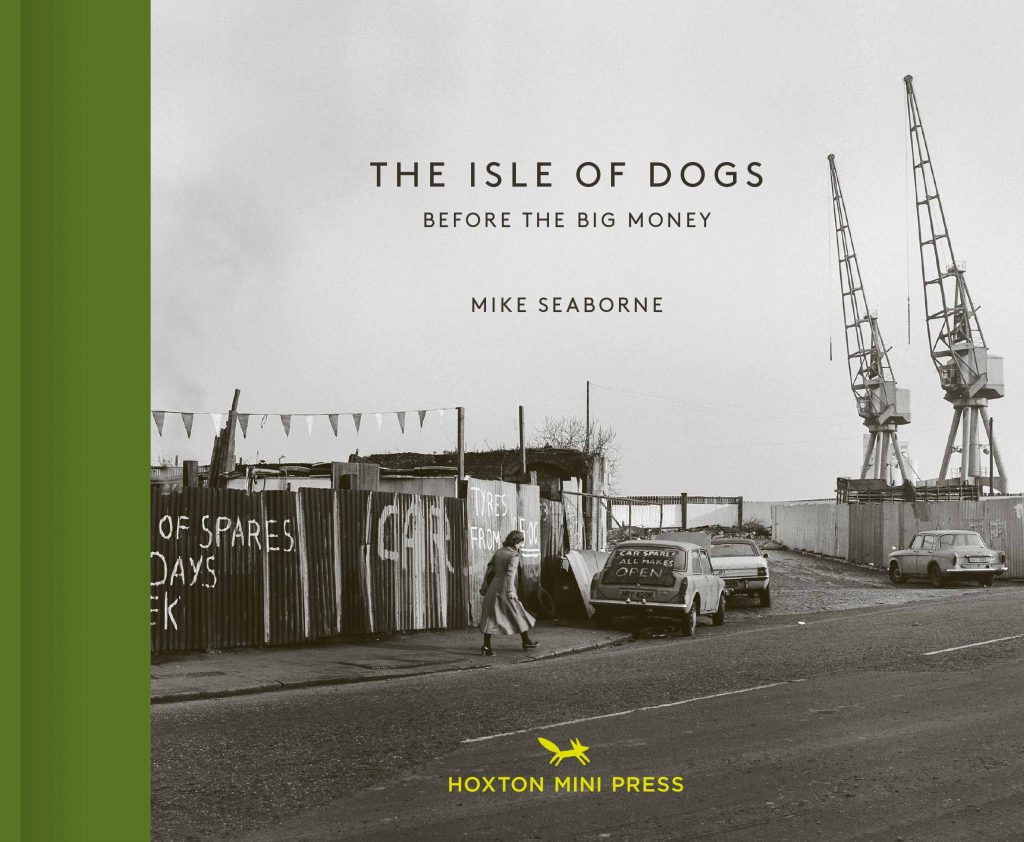Isle of Dogs book review
The Isle of Dogs, Before the Big Money is a collection of stunning black and white photographs of London Docklands as it was before Canary Wharf was built, when it was still London’s major shipping destination.
To most of us Canary Wharf is the corporate capital of Tower Hamlets, a glossy world of glass and steel housing the biggest banking and financial institutions of the world. It’s hard to imagine that a only a few decades ago it still looked much as it had done for the previous two hundred years when it was the country’s most important trading port.
Photographer Mike Seaborne began capturing images of the Isle of Dogs in 1982 when the area was being ‘regenerated’ to make room for Canary Wharf, what some have called the ‘UK’s biggest social experiment’.
Seaborne was struck by the extent to which the island still retained its traditional industrial character and decided to document the area before the London Docklands Development Corporation (LDDC, set up in 1981) carried out its transformation.
In partnership with Island History Trust, Seaborne documented the environment, remaining working factories and the social fabric of the area. Later in 1986, he started documenting early developments, notably the construction of the Docklands Light Railway from Tower Gateway to Island Gardens, which opened in September 1987.
The book opens with an introduction from Ken Worpole, a writer and social historian whose work includes many books on architecture, landscape and public policy. Worpole tells the story of the Isle of Dogs, the great teardrop peninsula that has been called an island for centuries. He recalls the opening of the Millwall Docks in 1868 when the island consisted of large enclaves of open water surrounded by high walls to deter public access to the ships and their cargoes, and shares his childhood memories when he accompanied his father to the timber-yards.
The first image is a simple map showing the Isle of Dogs area, with points showing the location of some notable buildings and businesses such as John Lenanton & Son Ltd (closed 1995) and McDougall’s grain silos (demolished 1985).
Seaborne realised he was working in the last days of the black and white documentary photographic tradition, long associated with social democratic sensibility, before colour took over as the livery of neo-liberalism. His black and white photographs add up an atmosphere of hope and despair, making them more authentic and memorable.
The images offer a glimpse into the history of this industrial area and show the ‘now’ and ‘then’ of many local streets and landmarks. A photograph of a street in Westferry in 1984 shows a lorry and 1980s muscle cars parked along the pavement. A few low-built houses and a scruffy warehouse stand on the right side of the road. Another photograph of the same street in 2013 shows a modern double decker bus D7 to Poplar passing by new apartment blocks on the site where the old buildings used to stand. The sidewalk is paved with new stone.
Other images include the construction of Canary Wharf DLR station, a disused railway viaduct across Millwall Park before the DLR in 1984 and a landscape of Greenwhich peninsula from the ‘Blue Bridge’ with cranes and chimneys looming through the foggy sky.
Isle of Dogs: warehouses and factories
Most of the photographs focus on documenting warehouses and factories, standing peacefully by the water or captured during the working hours, with steam evaporating from tall chimneys. Many of the architecturally magnificent warehouses on the North Quay of the Import Dock in the West India Docks were destroyed by bombing in 1940, but sufficient warehousing remained to recommence operations again after the war. However, from the 1960s onwards, London’s docks experienced a period of precipitate decline.
A set of photographs documents workers in Asda in 1984, punching their time cards when leaving work, rolling out dough in the bakery and the warehouse packed with goods. Asda Superstore plays an important part in the project and further images include shoppers inside the store, displays of fruit and vegetables and clothes on sale.
Another set shows workers inside the press room of Blythe Burrell Colours Ltd as well as washing down a tanker at Tate & Lyle’s sugar refinery, two of the last remaining large industrial firms that would soon be gone.
Most of these factories have been rebuilt into blocks of flats and office buildings. Premises such as workers’ canteen, washroom, kitchen and offices appear in the photographs, highlighting the rapid change in the workplace.
Isle of Dogs: a social history
The photographer further captures the life on the island and the brighter side of the scruffy, industrial land. The former tree-lined terraced streets of West Ferry Road and Manchester Road, punctuated by ornate pub facades, and decorative shopfronts, possessed an architectural integrity of their own.
Images show a shopping parade opposite George Green’s School with families walking by and kids playing on the street and iconic shop fronts with their owners posing in the front of them. Leggs Butchers, Rowell’s stationers shop and post office and Powell’s bakery are a few of the many.
During the project, Seaborne spoke to many people from local councillors, residents and participated in community meetings to discover that local residents felt they lacked the opportunity to be involved and have their say in the regeneration of the land.
Seaborne joined the launch of the Island Enterprise Centre in a shop opposite George Green’s School in 1985 and went on to photograph teenagers at the Senior Youth Club, St. Edmund’s Community Centre, retirement parties, mother and toddler groups as well as notable pubs like ‘Waterman’s Arms’ pub (later renamed ‘The Great Eastern’) and The Gun’ pub, Coldharbour.
The often dystopian images might look like they’re not only from another century, but also from another world, as the face of the area has changed so much over the years. Mike Seaborne has created an aesthetic space that allows readers to reflect upon and imagine post-industrial landscapes and settlements anew.
This book captures the face of Isle of Dogs and its people at the time of a great change. Not only it will appeal to those who remember the area during and before the regeneration, it will also pleasure the eye of photography enthusiasts and younger generation who wish to explore the social history of East London.
Isle of Dogs is printed by Hoxton Mini Press and is now available to order.
You can buy the book Isle of Dogs on the official website of Hoxton Minipress. If you liked this article, you might also like East London Photo Stories, a book capturing the places and people of East London.













